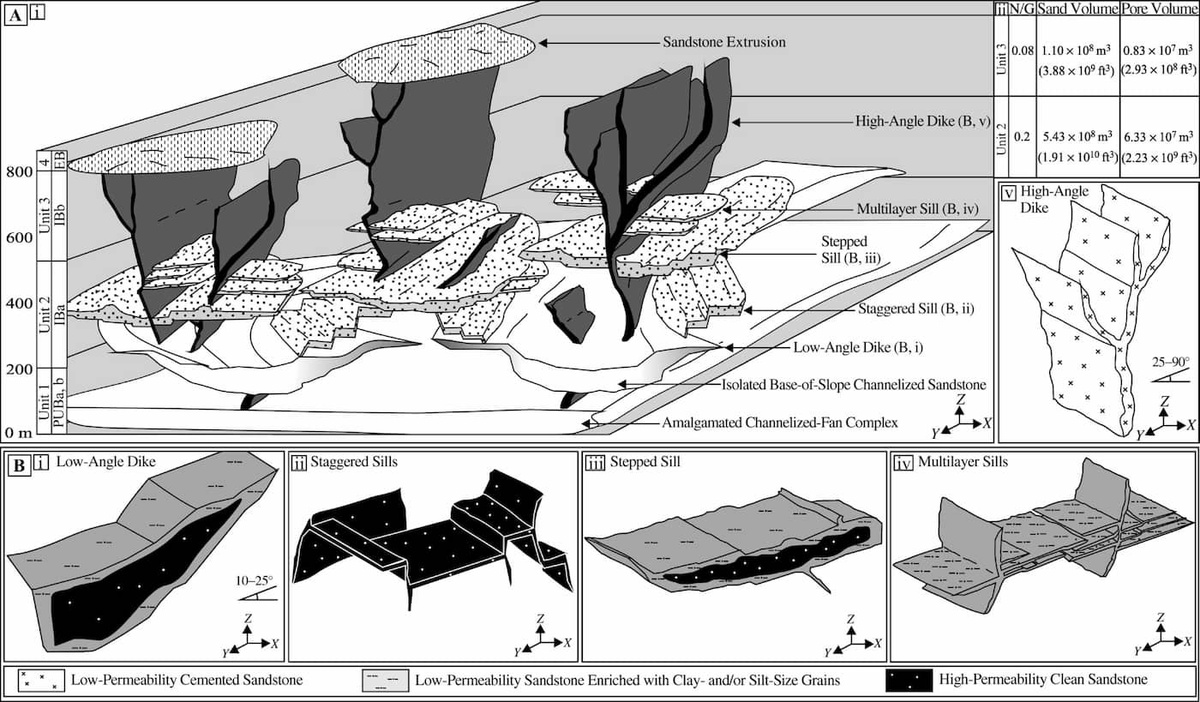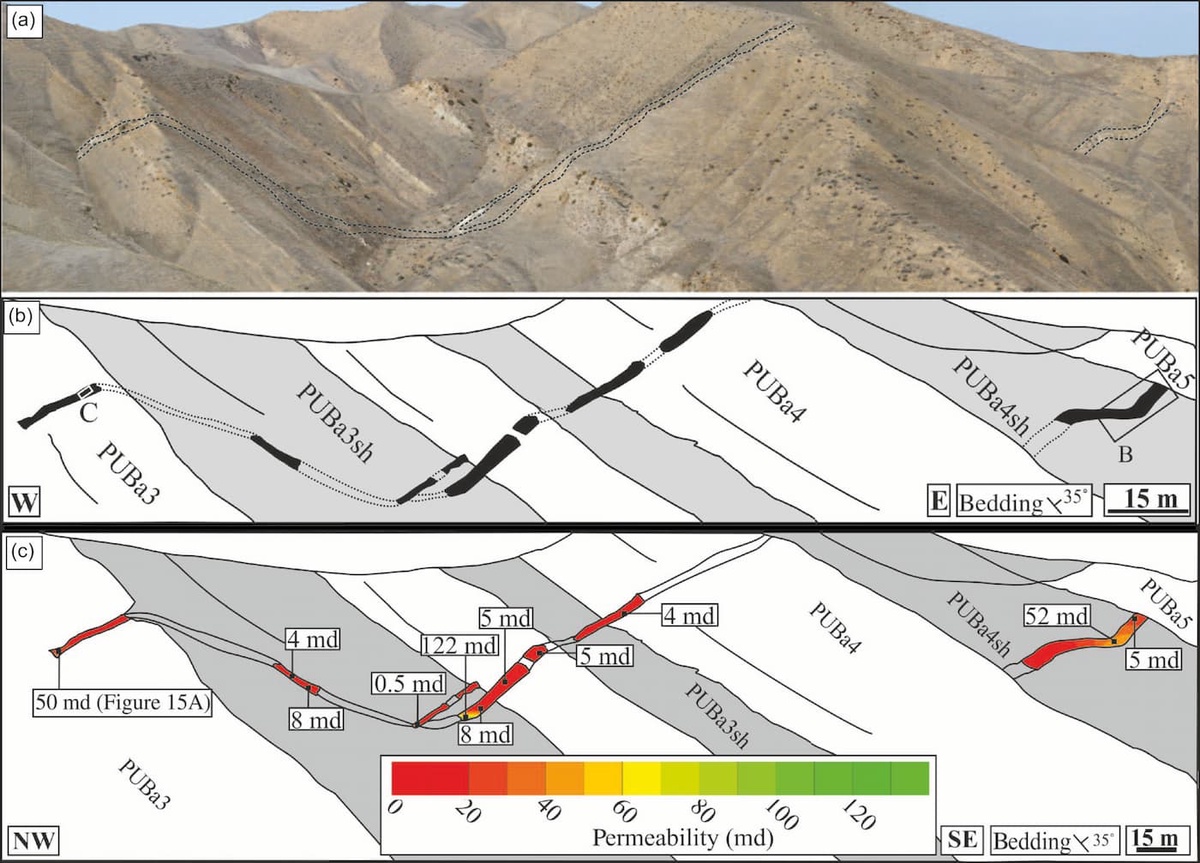Sand Injection Research Group | Phase 2
Principal Investigators: Andrew Hurst and Joe Cartwright - supported by Andy Morton and Jeff Wilson
Post-doctoral Research Fellows: Mario Vigorito (manager of outcrop studies), William Vettel, Olivier Stanzione
PhD Researcher: Anthony Scott
The prediction of the presence and variability of reservoir-quality units is high priority in exploration and production, a problem not unique to sand injectite fields. Resolving, even detecting, sandstone intrusion reservoirs is challenging on seismic surveys because of their irregular geometry and thickness. This is particularly true for high-angle dykes. When core data are available, the identification of sandstone intrusions is challenging for sedimentologists and problematic when building reservoir models.
The main aim of Phase 2 was cross-disciplinary and focused largely on extensive, detailed analysis of extensive outcrop analogues of giant sand injection complexes. All outcrop studies were designed to support subsurface interpretation, at seismic and sub-seismic scale. A fundamental approach to outcrop description was designed and implemented to provide a basis for basin analysis and subsurface evaluation of hydrocarbon prospectively and prediction of reservoir characteristics. Studies were conducted to determine the relationships between structural/tectonic controls, fracture mechanics, fluid flow, fluid pressure, and fluid dynamics, and their collective influence on the reservoir characterisation of sand injection complexes. Two linked themes were the focus of the project: 1) outcrop-scale and 2) micro-scale description and investigation.
1. Outcrop investigation and analysis
Significant fieldwork was carried out on the largest known outcrops and areas of exposure of sandstone intrusions, the Panoche Giant Injection Complex (PGIC). Extensive documentation of external geometry and internal structures was undertaken. Fundamentally, this allowed SIRG to critically evaluate and test the role of evolving pore pressure on sandstone intrusion emplacement and the resultant architectural arrangement of reservoir facies. Additional core-based studies used outcrop data to constrain subsurface interpretation.

Conceptual three-dimensional (3D) diagrams that synthesize the salient reservoir architectural elements described in this study. (A) Panoche giant injection complex (PGIC) reservoir geometry and volumetrics: (i) an interpretation of the 3-D geometry showing differing reservoir connectivity among architectural elements in units 1, 2, 3, and 4; (ii) estimates of sandstone-intrusion volume in units 2 and 3. (B) Summary of the 3-D geometry and trends in reservoir characteristics of architectural elements in the PGIC.
2. Micro-scale characterisation
Micro-scale investigation of internal structures and granular composition provides key data to differentiate sandstone identified as either depositional or injected. This has direct relevance to the prediction of sandstone intrusion geometry, architecture, and reservoir quality.
The role of elevated pore pressure is fundamental to sand fluidisation and injection. Detailed petrographic and petrophysical analysis, in combination with outcrop observations, was used to evaluate the fluid budget required to fluidise and inject 10's to 100's km3 of sand and provide evidence of the prevailing turbulent flow regime. An integrated model to explain the distribution of sandstone intrusions and their geometry was developed and related pore pressure evolution with respect to the lithostatic gradient, overburden thickness and average density, and location of the palaeo-seafloor. The model was applied successfully to some subsurface sand injectite fields. Field courses were held in California as consortium members sought to develop more familiarity with “sedimentary strata not seen in classrooms” - mind models to support subsurface interpretation are facilitated by time in the field, most rewarding!

